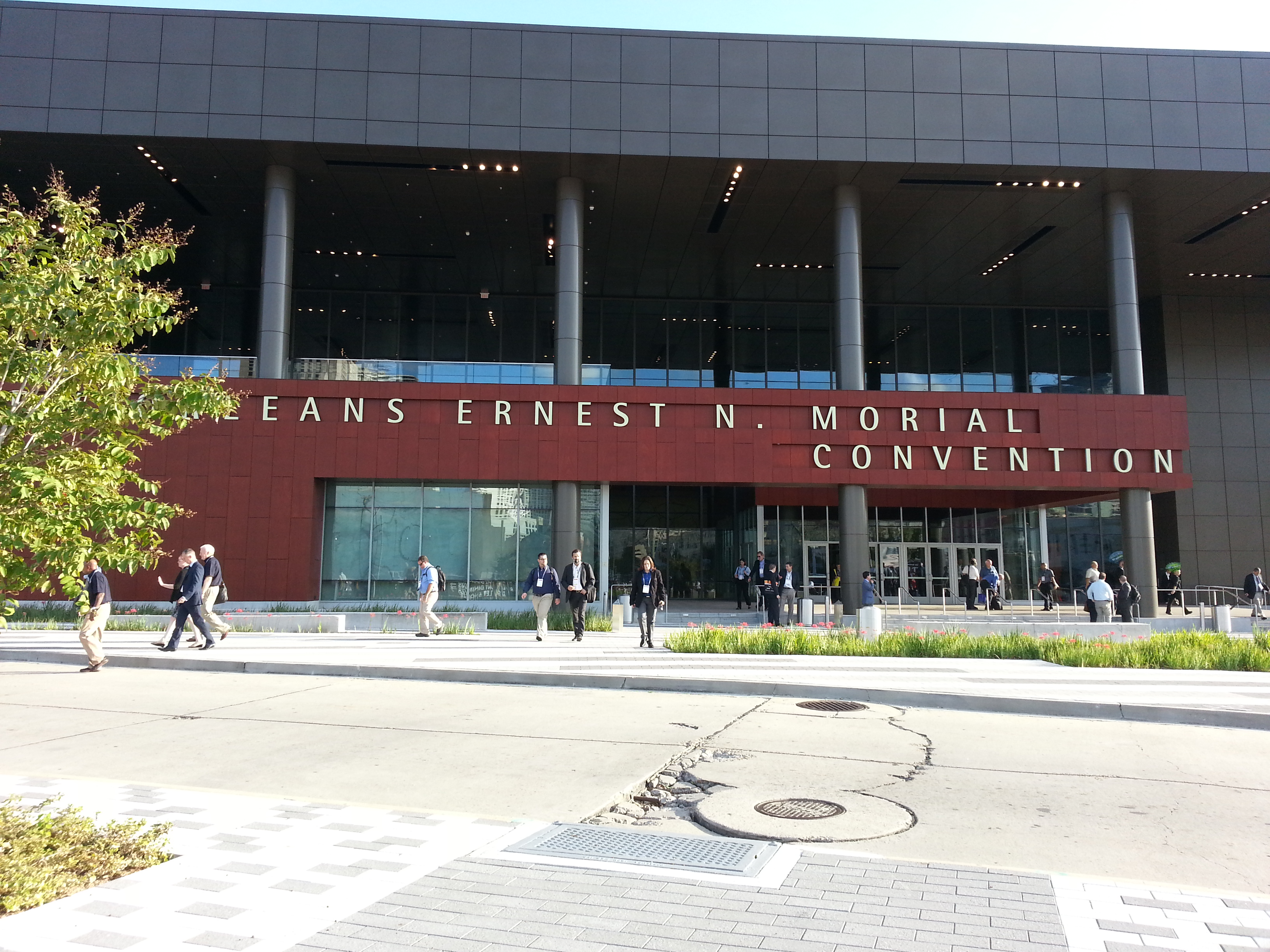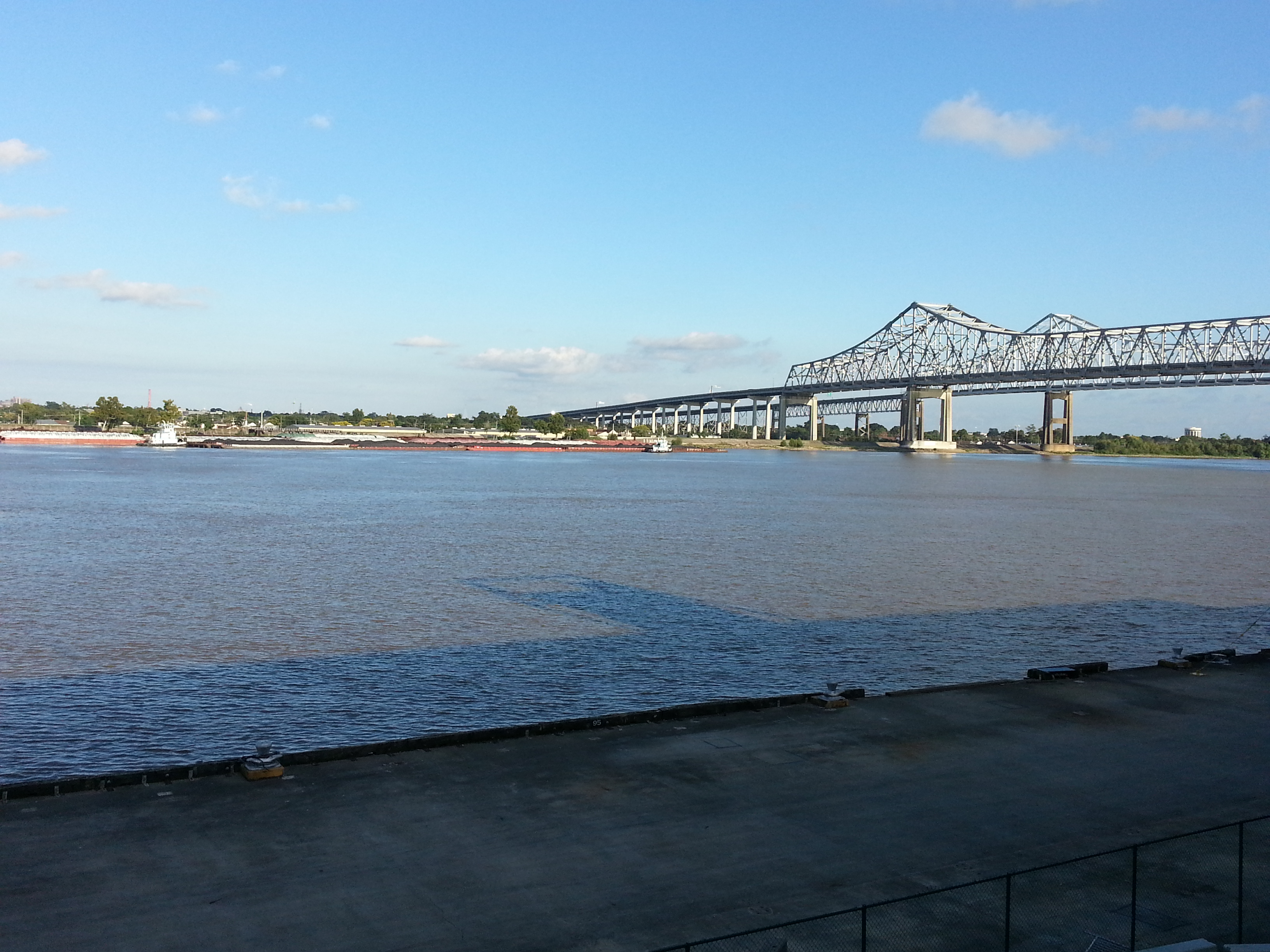WEFTEC 2014
This past week I had the opportunity to attend the WEFTEC conference and tradeshow in New Orleans, Louisiana. This post will hopefully convey a bit of this great experience.
WEFTEC (the Water Environment Foundation's Technical Exhibition and Conference) is the flag-show annual event for the wastewater treatment industry in North America. It was held in New Orleans this year, from Sept. 29 – Oct. 1 (for the main portion of the conference). There were hundreds of exhibitors and presenters, and reportedly over 20,000 attendees.
Activities at the conference included walking around the immense exhibit hall in the 1 km long convention centre to visit booths of companies providing wastewater treatment products, equipment, or services, and attending technical presentations. There were also networking events and dinners. A highlight for me was meeting people in person that I'd previously only known by reputation or long-distance communication.
Projects that the company I work for, ADI Systems, has been involved in were featured in some of the presentations I attended. It's nice to see some recognition and positive reception to our work in a public forum like this.

New Orleans is a very appropriate city to hold this conference in, in my opinion. It is located near the mouth of the Mississippi River (the convention centre is on the riverside), a river that drains over a third of the continental United States—from Pittsburg to Denver (see image below, derived from USGS data). Protecting the quality of a river impacted by so much human activity is an important role for the wastewater treatment industry.

![Mississippi Watershed] (GHOST_URL/content/images/2014/10/Mississippi_Watershed.jpg)
I thought I'd also share a few notes on some of the presentations I attended. For this post, I'm sticking to presentations by people I don't know, about projects I have no connection to (to avoid bias).
Comparison of Internal Combustion Engines and Microturbines for Cogeneration at the Oceanside Water Pollution Control Plant, San Francisco, CA, by Brett Reistad
- The comparison was based on 11 criteria with different weights
- Microturbines have fewer components to install and simpler mechanical piping
- Capital and O&M costs were a bit better for Internal Combustion Engines
- Internal Combustion Engines are a more established technology for the utilization of biogas; the long-term reliability of Microturbines on biogas needs to be further established, in the authors' judgement
- Microturbines include a number of modules, allowing further turn-down (in discrete steps)
- Internal Combustion Engines have a higher overall efficiency (electrical + thermal), at 65%
- Microturbines have simpler permitting
- For their application, they preferred Internal Combustion Engines following the detailed comparison
The Best Carbon for the Job: Using the 2010 WERF Protocol to Choose an External Carbon Alternative for Enhanced Nitrate Removal, by Cole Sigmon
- The City of Boulder, Colorado is expecting its effluent nitrate limits to become more stringent starting in 2017; phosphorus limits are expected to be tightened in 2022
- To drive more denitrification, they are looking at various carbon sources to dose to their wastewater treatment plant, including: methanol, weak wort (a waste product from a local brewery), MicroCTM, acetic acid, tofu whey, and cell growth media (a waste product from pharmaceutical production)
- They looked at a number of factors to compare these carbon sources, such as: cost (on a per lb of ffCOD basis), availability, quality, safety, handling, etc.
- The presenter said they were wary about adding additional nitrogen or phosphorus with the carbon source
- They performed a Nitrate-Uptake Rate (NUR) test on these materials
- The addition of these different carbon sources was modelled in BioWin
- In the end, they decided to use waste brewery weak wort, due to its local availability; acetic acid was selected as a back-up carbon source
Modeling Carbon Dosing Strategies for BNR Optimization in NYC, by Michael Lynch
- New York City wastewater treatment plants need to remove nitrogen to a lower level in their treated effluent due to eutrophication concerns in the Long Island Sound and Jamaica Bay
- Glycerol was selected as a carbon source for denitrification due to its favourable handling and safety characteristics
- Carbon addition was modelled in BioWin to develop default dosing rates in a diurnal look-up table and for wet-weather flows
- As with the primary effluent, the external carbon source will be added to the secondary treatment train in a step-feed mode; finding an appropriate split between four addition points was one of the uses of this modelling study
- Optimizing carbon addition is expected to provide savings to operational costs
For the month of October, I'm planning a series of posts related to what I do professionally. I expect to return to other topics (e.g. book reviews, 3D printing, DIY, etc.) next month. This seems like a good time to remind readers that everything on this blog is solely my own view and is written in my own capacity.